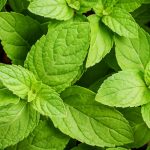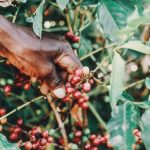Vegetable gardening is a rewarding and fulfilling hobby that allows individuals to cultivate their own fresh and nutritious produce at home. However, for beginners or even experienced gardeners looking to improve their skills, having a comprehensive guide can make all the difference when it comes to successful vegetable gardening. The Institute of Food and Agricultural Sciences (IFAS) offers a valuable vegetable gardening guide that provides expert advice and techniques to maximize yields and ensure fruitful outcomes.
A good vegetable gardening guide is essential because it equips gardeners with the knowledge needed to navigate the complexities of planting, growing, and caring for vegetables. The IFAS method stands out as a reliable approach in achieving optimal results. By following this guide, gardeners can learn about the best practices for activities such as site selection, soil preparation, proper fertilization, crop rotation, integrated pest management, and more.
The beauty of using the IFAS vegetable gardening guide lies in its ability to demystify the process. From choosing the right vegetables for your specific climate and soil conditions to maintaining healthy soil for robust plant growth, this comprehensive guide covers it all. Whether you are new to vegetable gardening or have years of experience under your belt, implementing the IFAS method can help you achieve bountiful harvests year after year.
Getting Started with Vegetable Gardening
Starting a vegetable garden can be a rewarding and fulfilling experience. Whether you are a seasoned gardener or just starting out, having a solid foundation is crucial for success. This section will outline the basics of getting started with vegetable gardening, from selecting the right site to designing your garden layout.
Site selection is one of the first considerations when starting a vegetable garden. Choose an area that receives at least 6-8 hours of direct sunlight per day. Vegetables need ample sunlight to thrive and produce abundant yields. Additionally, select a location that has good drainage to prevent waterlogging and root rot.
Once you have chosen a suitable site, it’s important to prepare the soil properly. Start by removing any weeds or grass from the area. Loosen the soil using a garden fork or tiller, breaking up any clumps and removing rocks or debris.
Incorporate organic matter such as compost or well-rotted manure to improve soil fertility and structure. Lastly, consider conducting a soil test to determine its pH level and nutrient content. This information will guide you in making any necessary adjustments before planting.
Designing your garden layout is another crucial aspect of getting started with vegetable gardening. Consider factors such as available space, convenience, and ease of maintenance when planning your beds or rows. Group vegetables with similar growth requirements together to optimize space utilization and improve overall efficiency in caring for your plants.
In summary, getting started with vegetable gardening involves carefully selecting the right site, preparing the soil adequately, and planning your garden layout strategically. By following these basic guidelines, you will lay the groundwork for successful vegetable gardening using the IFAS method.
Understanding the IFAS Method for Vegetable Gardening
The IFAS Method for Vegetable Gardening is a comprehensive approach developed by the Institute of Food and Agricultural Sciences. This method integrates various principles and techniques to maximize yields, ensure successful vegetable gardening, and promote sustainable practices. Understanding the IFAS method is crucial for anyone looking to have a thriving vegetable garden.
The Principles of the IFAS Method
The IFAS Method for Vegetable Gardening is based on a set of principles that focus on achieving optimal plant health and productivity while minimizing negative impacts on the environment. One of the main principles is crop rotation, which involves systematically changing the location of different vegetable crops each year to prevent the buildup of pests, diseases, and nutrient imbalances in the soil.
Integrated Pest Management (IPM) is another key principle of the IFAS method. This approach emphasizes using a combination of cultural practices, biological controls, and targeted pesticide applications to manage pest populations effectively without causing harm to beneficial insects or the environment. By implementing IPM strategies, vegetable gardeners can minimize pesticide use and maintain a balanced ecosystem within their gardens.
Proper fertilization is also essential in the IFAS method. It emphasizes understanding and addressing the specific nutrient requirements of each vegetable crop through soil testing and tailored fertilizer applications. This ensures that plants receive adequate nutrition for healthy growth while avoiding excessive fertilizer use that can lead to water pollution.
Techniques Used in the IFAS Method
The IFAS Method for Vegetable Gardening incorporates several techniques that contribute to successful gardening outcomes. These include mulching, which involves placing organic materials such as straw or wood chips around plants to reduce weed growth, conserve soil moisture, and improve soil structure over time.
Another technique used in the IFAS method is companion planting. This involves strategically placing compatible plants together to enhance growth, repel pests, attract beneficial insects and pollinators, or provide shade or support.
Furthermore, proper irrigation techniques are crucial in vegetable gardening. The IFAS method promotes efficient watering practices, such as using drip irrigation systems or soaker hoses, to deliver water directly to the plant’s root zone while minimizing waste and promoting deep root development.
Benefits of the IFAS Method
By following the IFAS method for vegetable gardening, gardeners can experience numerous benefits. This approach helps optimize plant health and productivity, resulting in higher yields of high-quality produce. It also promotes sustainable practices by reducing the use of synthetic pesticides and fertilizers, minimizing environmental impacts, and fostering a healthier ecosystem within the garden.
The IFAS method also provides a comprehensive framework that guides gardeners through each stage of the vegetable gardening process, from site selection and soil preparation to harvest and beyond. It offers valuable information on crop selection, pest management, soil health, and more, helping gardeners make informed decisions and overcome common challenges they may encounter.
Overall, understanding and implementing the IFAS Method for Vegetable Gardening can greatly enhance your gardening experience and increase your chances of achieving successful outcomes. By utilizing its principles and techniques, you can create a productive and sustainable vegetable garden that brings joy and nutritious produce to your table.
Selecting the Right Vegetables for Your Garden
When starting a vegetable garden, one of the most important decisions you will make is selecting the right vegetables to grow. It is essential to choose crops that are well-suited for your specific garden conditions and personal preferences. By considering factors such as climate, soil type, and desired yield, you can increase your chances of a successful harvest.
Climate plays a significant role in determining which vegetables thrive in your garden. Different plants have varying temperature and sunlight requirements, so it is crucial to select crops that are suitable for your region’s climate zone. For example, cool-season vegetables like kale and lettuce prefer cooler temperatures and shorter daylight hours, while warm-season plants like tomatoes and peppers require warmer temperatures and longer days.
Soil type is another vital factor to consider when selecting vegetables. Some plants prefer sandy soil with good drainage, while others thrive in clay-based soil with higher water retention capabilities. Conducting a simple soil test can help you understand the characteristics of your soil and make informed choices about which vegetables will grow best.
Lastly, personal preference should not be overlooked when choosing vegetables for your garden. Consider what types of vegetables you enjoy eating the most or what varieties are popular among family members or neighbors. Growing vegetables that you are excited to eat increases motivation and overall satisfaction with your garden.
| Vegetable | Best Climate Zone | Preferred Soil Type |
|---|---|---|
| Tomatoes | Warm-season (Zone 7-10) | Sandy loam |
| Lettuce | Cool-season (Zone 8-10) | Well-draining soil |
| Cucumbers | Warm-season (Zone 8-10) | Sandy loam |
| Carrots | Cool-season (Zone 7-9) | Sandy or loamy soil |
| Bell Peppers | Warm-season (Zone 9-11) | Loamy or clay soil |
By considering climate, soil type, and personal preferences when selecting vegetables for your garden, you can increase the likelihood of a bountiful harvest and a rewarding gardening experience. Remember to also refer to the IFAS vegetable gardening guide for specific recommendations and tips on growing various crops using their proven methods.
Preparing the Soil for vegetable gardening IFAS
When it comes to vegetable gardening using the IFAS method, one of the most critical steps is preparing the soil. Proper soil preparation sets the foundation for healthy plant growth and high yields. Here are some step-by-step instructions on how to prepare your soil for vegetable gardening using the IFAS approach:
- Soil Testing: Before you begin any soil preparation, it’s essential to test your soil’s pH level and nutrient content. Soil testing kits are readily available at gardening centers or through your local agricultural extension office. Based on the results, you can make appropriate adjustments to optimize soil fertility.
- Add Organic Matter: Adding organic matter to your soil improves its structure, drainage, and nutrient-holding capacity. You can incorporate well-rotted compost, aged manure, or other organic materials into your garden beds. Spread a layer of organic matter, approximately 2-3 inches thick, across the entire planting area.
- Adjust pH Levels: Most vegetables prefer slightly acidic soil with a pH range between 6.0 and 7.If your soil is too acidic (low pH), you can raise it by adding lime or wood ashes. On the other hand, if your soil is too alkaline (high pH), sulfur or acidifying fertilizers can be used to lower the pH.
- Avoid Compaction: Avoid walking on freshly tilled or prepared soils as much as possible as it can lead to compaction. Compacted soils have reduced pore spaces that impede root penetration and water circulation. You can create designated pathways or stepping stones to minimize foot traffic in vegetable beds.
- Maintain Moisture: After the initial soil preparation, it’s crucial to maintain adequate moisture levels throughout the growing season. Mulching your vegetable garden helps conserve soil moisture and suppress weed growth. Organic mulches such as straw, grass clippings, or wood chips work well with the IFAS method.
By following these steps for soil preparation in vegetable gardening using the IFAS approach, you can ensure that your plants have a healthy start and thrive throughout the growing season. Remember that regular soil maintenance is essential, so monitor soil conditions and make necessary adjustments as needed.
Planting and Caring for Vegetable Crops
Once you have prepared your soil and selected the right vegetables for your garden, it’s time to start planting and caring for your vegetable crops. Proper planting and care techniques are crucial for the success of your garden and the overall health of your plants.
When it comes to planting vegetable crops, spacing is important to ensure proper air circulation and minimize competition for resources. Be sure to follow the spacing recommendations provided on seed packets or plant labels. Planting too closely can lead to overcrowding, which can increase the risk of disease and reduce yields.
In addition to spacing, pay attention to the depth at which you plant your seeds or seedlings. Different vegetables have different planting depths, so refer to individual guidelines for each crop. As a general rule, plant seeds at a depth that is two to three times their diameter.
Watering is another critical aspect of caring for vegetable crops. It’s essential to provide adequate moisture without overwatering. Irrigate consistently but avoid creating waterlogged conditions, as this can lead to root rot and other fungal diseases. Aim to keep the soil evenly moist throughout the growing season, paying particular attention during hot weather or drought periods.
Regular maintenance activities are necessary for healthy vegetable crops. Weeding is crucial because weeds compete with vegetables for nutrients, water, and sunlight. Remove weeds by hand or use appropriate tools carefully to avoid damaging nearby plants’ roots.
Mulching is also beneficial in vegetable gardening as it helps suppress weeds while retaining moisture in the soil. Apply a layer of organic mulch around plants once they have established themselves.
Some vegetable crops may require staking or support as they grow. This prevents them from leaning or collapsing under their weight and keeps fruits off damp ground surfaces that may promote rotting.
Integrated pest management (IPM) is highly recommended when dealing with pests and diseases in your vegetable garden. Regularly inspect your plants for signs of pests or diseases, and take appropriate action immediately. This can include handpicking pests, introducing beneficial insects, or using organic pest control methods. By following IPM principles, you can minimize the use of chemical pesticides while effectively managing unwanted pests.
By implementing these planting and care techniques, you are setting your vegetable garden up for success. Proper spacing, depth planting, watering, maintenance activities, and pest management will contribute to healthy and productive plants. Remember to monitor your garden regularly and make adjustments as necessary to promote optimal growth and yield.
Harvesting and Preserving Your Vegetable Garden Yield
Determining the Ideal Harvest Time
One of the most important aspects of vegetable gardening is knowing when to harvest your crops. Harvesting at the right time ensures that you get the best flavor and texture from your vegetables. For some crops, such as tomatoes and peppers, it’s essential to wait until they are fully ripe before picking them. Others, like leafy greens and herbs, can be harvested at any stage of maturity.
To determine the ideal harvest time for each vegetable, use visual cues such as color change or size. For example, carrots are ready to be harvested when their tops start to push out of the soil and their orange color deepens. Additionally, gently pull on a leaf or stem of the plant and check if it easily comes off without resistance.
Post-Harvest Handling and Storage
Proper handling after harvest is crucial for maintaining the quality and freshness of your vegetables. One key step is to clean them thoroughly by removing any dirt or debris. Avoid washing vegetables until you’re ready to use them because excess moisture can lead to spoilage.
After cleaning, it’s important to store your vegetables in suitable conditions. Some vegetables like tomatoes can be stored at room temperature away from direct sunlight, while others require cooler temperatures. Leafy greens should be placed in a perforated plastic bag in the refrigerator’s crisper drawer to maintain moisture.
Preserving Methods for Longevity
Preserving your vegetable garden yield allows you to enjoy fresh produce even after the growing season has ended. Canning, freezing, and pickling are popular methods for extending the shelf life of various vegetables.
Canning involves processing food in jars under high heat to ensure long-term preservation. This method works well for items like tomatoes, beans, and pickles that have high acidity levels.
Freezing is a simple preservation method and works particularly well for vegetables like peas, corn, and peppers. Blanching the vegetables before freezing helps retain their color, flavor, and nutritional value.
Pickling is another excellent way to preserve vegetables like cucumbers, carrots, and radishes. The process involves soaking the vegetables in a mixture of vinegar, salt, sugar, and spices, which helps enhance their flavor and extend the shelf life.
By following these harvesting tips and preservation methods, you can enjoy the fruits of your vegetable gardening labor long after the growing season ends. It’s a wonderful feeling to know that you can still enjoy homegrown produce during winter months when fresh vegetables can be scarce or costly.
Troubleshooting Common Vegetable Gardening Issues with IFAS
Vegetable gardening, while rewarding, can come with its fair share of challenges. From nutrient deficiencies to soil diseases and pest infestations, gardeners often face obstacles that can hinder their vegetable-growing success. However, by implementing the principles of the Institute of Food and Agricultural Sciences (IFAS) method, gardeners can effectively troubleshoot and overcome these common issues.
One common problem that vegetable gardeners may encounter is nutrient deficiencies in their soil. Nutrient deficiencies can lead to stunted growth, poor production, and unhealthy plants. To address this issue using the IFAS method, it is crucial to conduct a soil test to identify any specific nutrient deficiencies present. Based on the results, gardeners can then add organic matter or apply targeted fertilizers to provide the necessary nutrients for optimal plant growth.
Another challenge that vegetable gardeners may face is soil-borne diseases. Soil diseases can cause wilting, stunted growth, and yellowing leaves in plants. The IFAS method emphasizes proper crop rotation as a key strategy for managing and preventing soil-borne diseases. By rotating crops from different plant families each year, gardeners can disrupt disease cycles and reduce the risk of infection in their vegetable garden.
Pest infestations are also a common issue that vegetable gardeners may encounter. Insects such as aphids, caterpillars, and beetles can wreak havoc on vegetable plants if not properly managed.
In line with the principles of integrated pest management (IPM), the IFAS approach encourages gardeners to use a combination of strategies to control pests effectively while minimizing harm to beneficial insects and the environment. These strategies include using physical barriers like row covers or netting, handpicking pests when feasible, employing biological controls like beneficial insects or nematodes if necessary, and applying organic insecticides only as a last resort.
By utilizing the troubleshooting strategies outlined in the IFAS vegetable gardening guide, gardeners can overcome common issues to achieve successful vegetable gardening outcomes. It is important to remember that every garden is unique, and it may take some trial and error to find the most effective solutions for specific challenges.
If further assistance is needed, there are additional resources available through IFAS or local agricultural extension offices that can provide expert advice and support. By persevering through these challenges and adapting the IFAS method to their specific garden’s needs, vegetable gardeners can maximize their yield and enjoy a bountiful harvest season after season.
Conclusion
In conclusion, implementing the IFAS Vegetable Gardening Guide can provide numerous benefits for both beginner and experienced gardeners. By following the principles and techniques outlined in the guide, gardeners can maximize their yields and ensure successful vegetable gardening.
One of the key advantages of using the IFAS method is its comprehensive approach to vegetable gardening. The guide covers all aspects of starting and maintaining a vegetable garden, from site selection and soil preparation to planting, caring for crops, and even harvesting and preserving the yield. This comprehensive coverage enables gardeners to have a clear roadmap to follow, increasing their chances of success.
Additionally, the IFAS method emphasizes sustainable practices such as crop rotation, integrated pest management, and proper fertilization. These practices not only promote healthier plants with fewer pest problems but also contribute to a more environmentally friendly approach towards gardening. By implementing these techniques, gardeners can reduce their reliance on chemical pesticides and fertilizers, making their gardens more sustainable in the long term.
Overall, by using the IFAS Vegetable Gardening Guide as a resource, gardeners can gain valuable knowledge that will help them achieve successful outcomes in their vegetable gardens. Whether they are new to gardening or experienced enthusiasts looking to improve their skills, following the principles outlined in this guide can lead to bountiful harvests and a rewarding gardening experience. So don’t hesitate to implement this comprehensive guide in your vegetable gardening endeavors.
Frequently Asked Questions
When should I start a vegetable garden in Florida?
In Florida, the timing of when to start a vegetable garden depends on the region and the specific vegetables you want to grow. Generally, Florida’s mild climate allows for year-round gardening, but it’s important to consider temperature and humidity variations across the state. In North and Central Florida, where winters can be cool, starting a vegetable garden in late winter or early spring is ideal.
South Florida has a more tropical climate, making it suitable for gardening year-round. It’s essential to consult with local gardening resources or extension offices in your area for more specific guidance based on your location.
What vegetables should I plant in Florida right now?
A wide variety of vegetables can be successfully grown in Florida considering its warm climate. Some great options for planting in Florida include tomatoes, peppers, cucumbers, eggplants, squash, beans, lettuce, kale, collard greens, okra, and herbs like basil and parsley.
These vegetables thrive in the warm temperatures and can often tolerate the humidity common in many parts of the state. When choosing what vegetables to plant right now, consider not only your preferences but also factors such as sunlight availability and water requirements.
What is a good layout for a vegetable garden?
Designing a good layout for a vegetable garden involves several considerations to maximize productivity and efficiency. One popular approach is using raised beds or containers that provide improved drainage while allowing better control over soil quality. When planning the layout, take into account each vegetable’s space requirements and differing levels of sun exposure needed – taller plants can cast shadows on shorter ones if not properly arranged.
Grouping plants with similar water requirements together will simplify irrigation tasks. Additionally, incorporating pathways between beds ensures easy access for maintenance activities like weeding and harvesting while reducing soil compaction caused by foot traffic. Consider incorporating trellises or supporting structures for climbing plants like tomatoes or beans to save space vertically within your garden layout as well.

If you’re looking to get into vegetable gardening, or are just looking for some tips on how to make your current garden better, then you’ve come to the right place! My name is Ethel and I have been gardening for years. In this blog, I’m going to share with you some of my best tips on how to create a successful vegetable garden.





